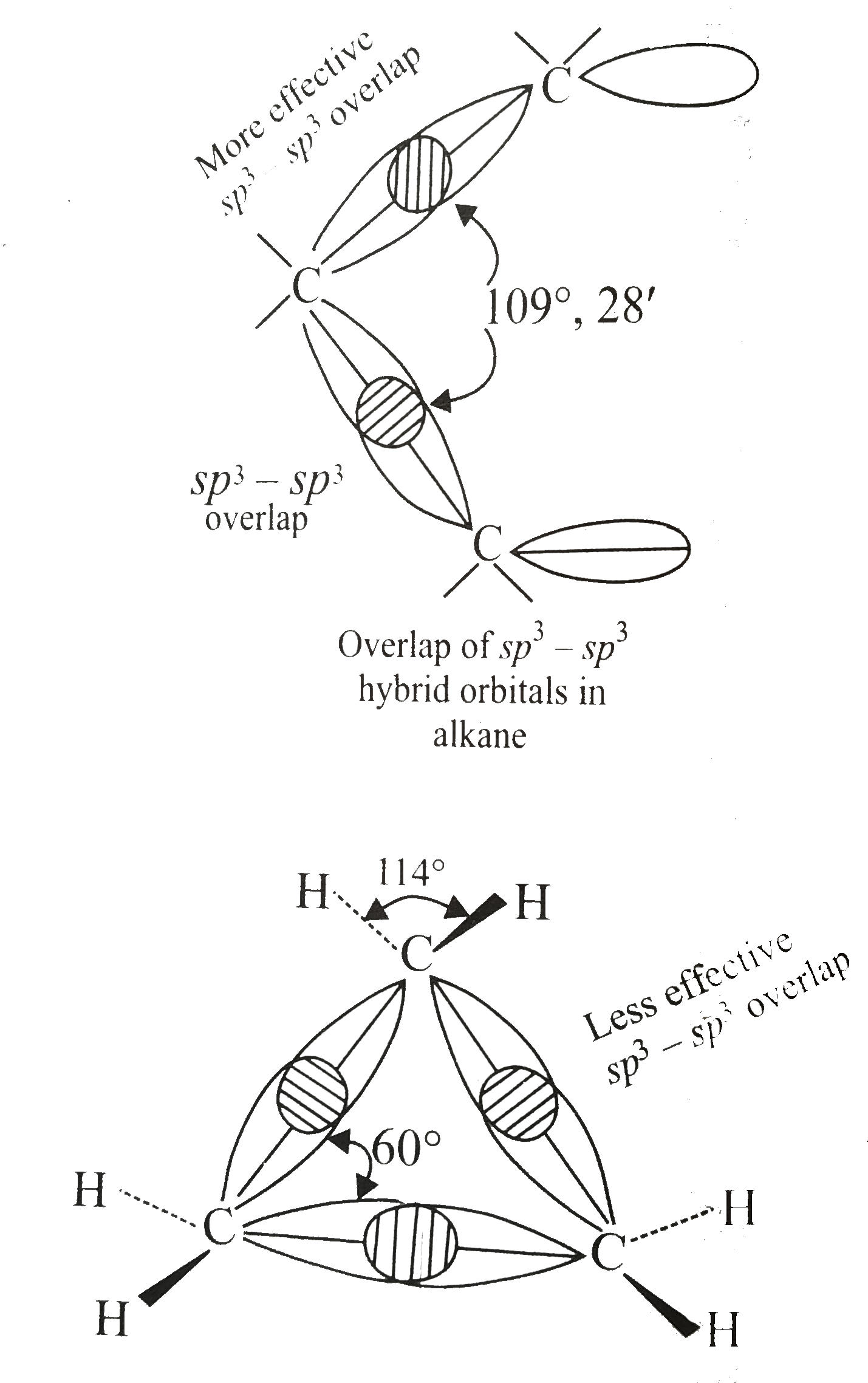Compare the orbital overlap in cyclopropane and alkane.
As there is maximum overlap of orbitals along the bond axis, the covalent bond formation is strongest. In alkanes, there is perfect end on overlap of sp3 hybrid orbitals of C atoms. In cyclopropane, head on overlap of sp3 hybrid orbitals does not lead to ring closure because it requires bond angle of 109∘ , 28'. Therefore, in cyclopropane, overlap of sp3 hybrid orbitals is off the axis giving less effective bent ('banana') bonds.

In oprder to minimum the angle strain, the C atoms develop more p character in the orbitals forming the ring and consequently more s character in the external (C----H) bonds. Since bond angles obtained by overlapping p orbitals are 90∘ , additional p charactter, the hybrid orbitals for the external bonds are between sp3 and sp2 , leading to an increase in the bond angle. The more is the s character in the hybrid orbital used by C to form a bond, the shorter is the (C----H) bond, and hence the cyclopropane is more acidic than propoane.
Topper's Solved these Questions
- BOOK - CENGAGE CHEMISTRYCHAPTER - ALKANES AND CYCLOALKANESEXERCISE - SOLVED EXAMPLES19videos
ALKANES AND CYCLOALKANES
- BOOK - CENGAGE CHEMISTRYCHAPTER - ALKANES AND CYCLOALKANESEXERCISE - EXERCISES24videos
ALKANES AND CYCLOALKANES
- BOOK - CENGAGE CHEMISTRYCHAPTER - ALKENES AND ALKADIENESEXERCISE - Single correct Answer14videos
ALKENES AND ALKADIENES
Similar Questions
Knowledge Check
- Question 1 - Select One
The angle strain in cyclopropane is :
A0∘44'B24∘44'C9∘44'D5∘16' - Question 2 - Select One
The orbital overlapping is maximum in
ACl2BHICHClDHBr - Question 3 - Select One
Type of orbital overlap in H2O molecule is
Asp3−sp3Bsp3−2pCsp2−sDsp3−s
In the formation of π-bond, the atomic orbitals overlap in such a way that
View SolutionIn the following ofπ bond the atomic orbitals overlap in such a way that
View SolutionWhich of the following atomic orbitals overlapping are not allowed
 View Solution
View SolutionAccording to VBT the extent of overlapping depends upon types of orbitals involved in overlapping and nature of overlapping. More will be the overlapping and the bond energy will also be high.
The incorrect order of bond dissociation energy will be :View SolutionAccording to VBT the extent of overlapping depends upon types of orbitals involved in overlapping and nature of overlapping. More will be the overlapping and the bond energy will also be high.
Which of the following compound does not form pπ−pπ bond ?View Solution

